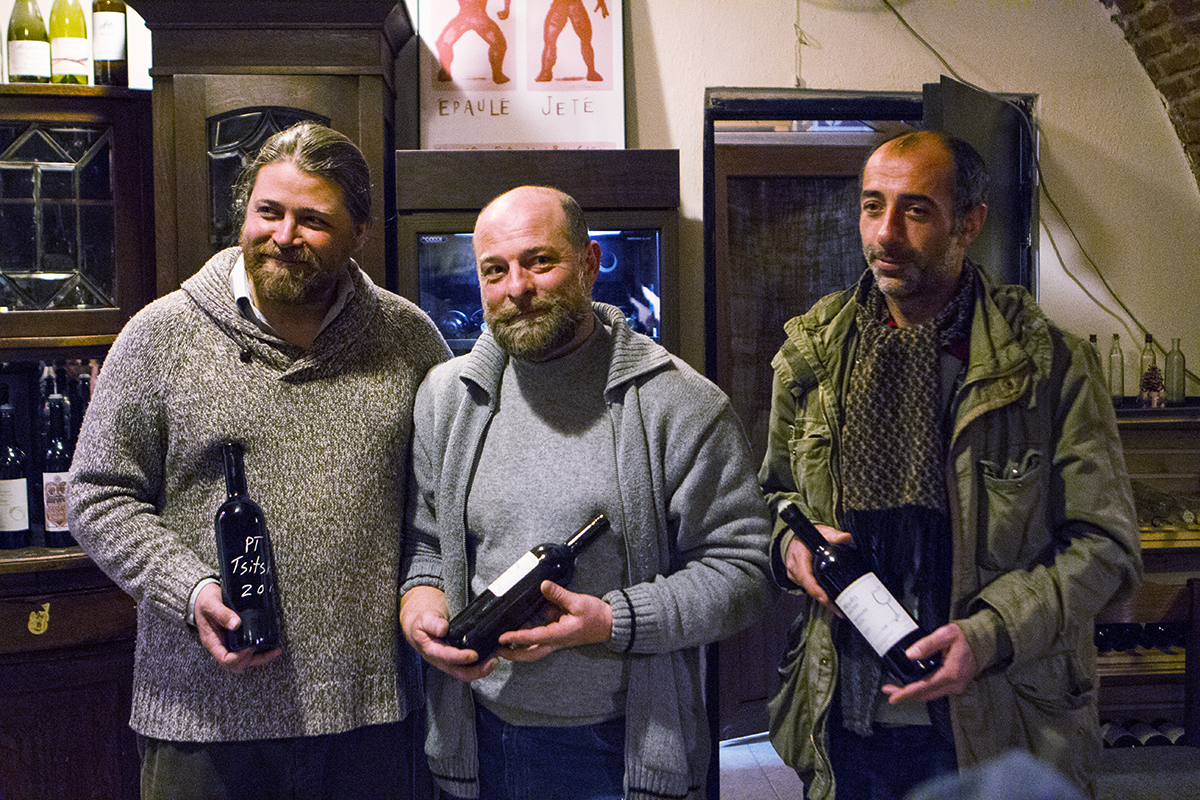 Like most Americans, when someone would mention Georgia, I would think the state in the south. That began to change for me last year when I heard the International Wine Tourism Conference would be held in Tblisi, Georgia. Georgia is a fascinating country, situated north of Armenia and south of Russia with its western border on the Black Sea. Although several people I visited with prior to my going expressed surprise that wine is produced near Russia, Georgia is also known as “The Cradle of Wine.” Georgians have made wine for more than 8,000 years.
Like most Americans, when someone would mention Georgia, I would think the state in the south. That began to change for me last year when I heard the International Wine Tourism Conference would be held in Tblisi, Georgia. Georgia is a fascinating country, situated north of Armenia and south of Russia with its western border on the Black Sea. Although several people I visited with prior to my going expressed surprise that wine is produced near Russia, Georgia is also known as “The Cradle of Wine.” Georgians have made wine for more than 8,000 years. 
After very little rest, I joined a group of fellow bloggers and headed out to the Tblisi market. Covering several square blocks, the market offers its visitors everything from spark plugs to sausages. Row after row of vendors featured fresh produce, freshly baked bread, meats, cheeses, pickled garlic, honey, clothes and practically anything else you could imagine. I brought home a garlicky curry powder that I’ve used in a few dishes. After our market visit, we split our group into two cabs and challenged our drivers to find Cafe Kala, a place that came highly recommended. After twisting and turning our way through narrow city streets, we reached our destination. I chuckled when I saw the name of the bar next door – KGB Still Watching You. As this was our first Georgian meal, we ordered a little bit of everything and it was mighty tasty.
 We returned to the conference host hotel, the Tblisi Marriott, before heading to Vino Underground for our first taste of Georgian wine. Ex-pat John Wurdeman has lived in Georgia for more than 18 years now and has fully embraced Georgian culture, history and its people. He is one of eight winemakers who own this small wine bar and shop and a few of his fellow winemakers joined him to introduce most of us to our first tastes of Georgian wine. You’ll often hear talk of orange wine in Georgia. In addition to more conventional methods, Georgians make wine in an ancient earthenware vessel called a kvevri. Where normally grape skins are pulled off after just a few hours of contact with the juice, here it’s not uncommon for the skins, seeds and stems to be left in contact for six months or more. What this does is produce a wine that is extremely tannic and at first sip, shocking. It’s an acquired taste and I’m happy to say after a few days I found myself beginning to enjoy these unique wines.
We returned to the conference host hotel, the Tblisi Marriott, before heading to Vino Underground for our first taste of Georgian wine. Ex-pat John Wurdeman has lived in Georgia for more than 18 years now and has fully embraced Georgian culture, history and its people. He is one of eight winemakers who own this small wine bar and shop and a few of his fellow winemakers joined him to introduce most of us to our first tastes of Georgian wine. You’ll often hear talk of orange wine in Georgia. In addition to more conventional methods, Georgians make wine in an ancient earthenware vessel called a kvevri. Where normally grape skins are pulled off after just a few hours of contact with the juice, here it’s not uncommon for the skins, seeds and stems to be left in contact for six months or more. What this does is produce a wine that is extremely tannic and at first sip, shocking. It’s an acquired taste and I’m happy to say after a few days I found myself beginning to enjoy these unique wines.
 We took a short stroll to Azarpesha, where we met ethnographer and singer Luarsab Togonidze. John wanted us to enjoy a traditional Georgian supra, a feast punctuated by numerous toast and shots of chacha, Georgia’s form of grappa. Platter after platter of delicious Georgian food was served along with several different Georgian wines and of course plenty of chacha. Our first full day drew to a close and we headed back to the Marriott with full tummies and a huge appreciation for Georgian hospitality. Georgians say they save the best for their guests and from everything I saw that’s the truth.
We took a short stroll to Azarpesha, where we met ethnographer and singer Luarsab Togonidze. John wanted us to enjoy a traditional Georgian supra, a feast punctuated by numerous toast and shots of chacha, Georgia’s form of grappa. Platter after platter of delicious Georgian food was served along with several different Georgian wines and of course plenty of chacha. Our first full day drew to a close and we headed back to the Marriott with full tummies and a huge appreciation for Georgian hospitality. Georgians say they save the best for their guests and from everything I saw that’s the truth.

